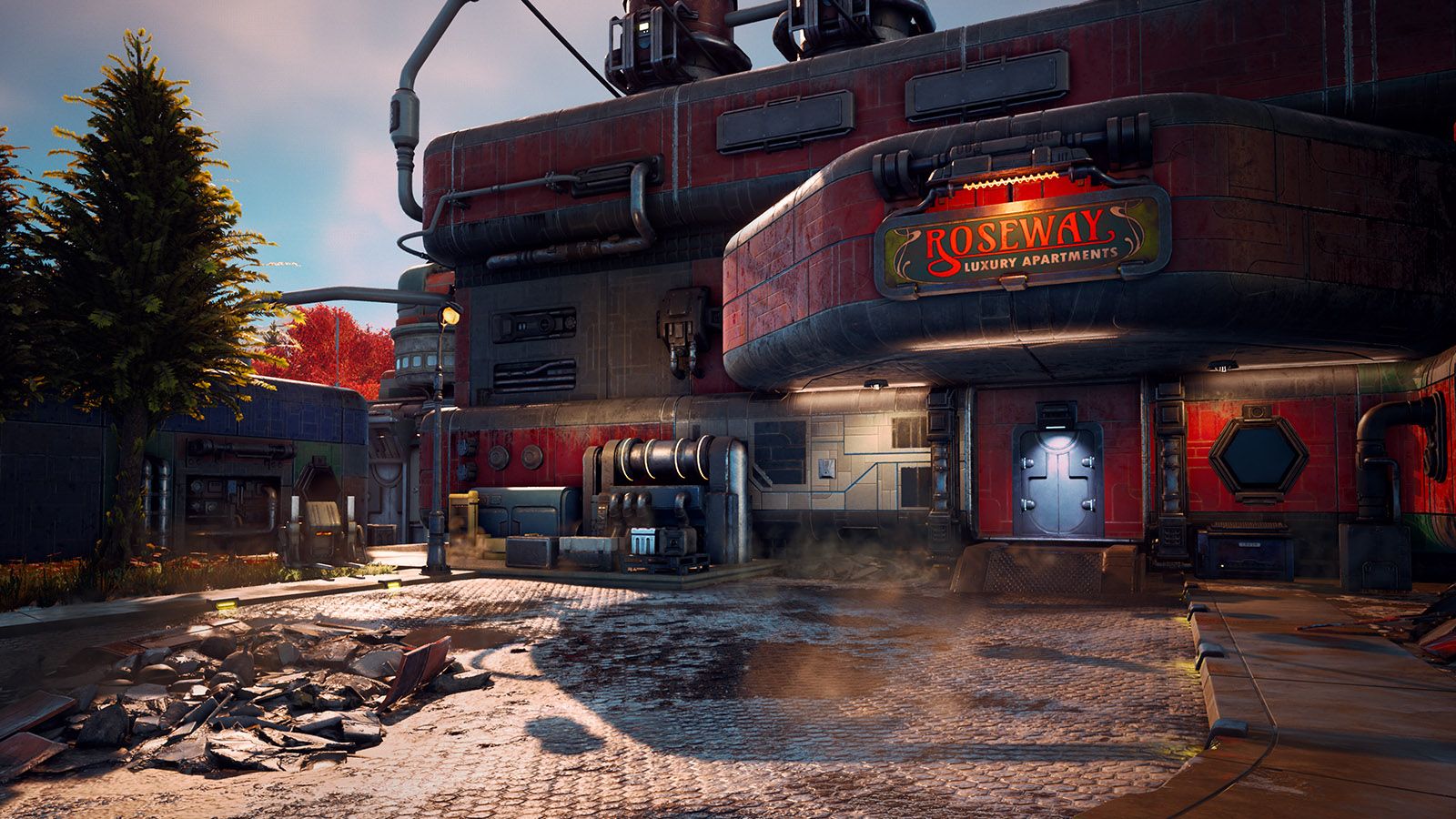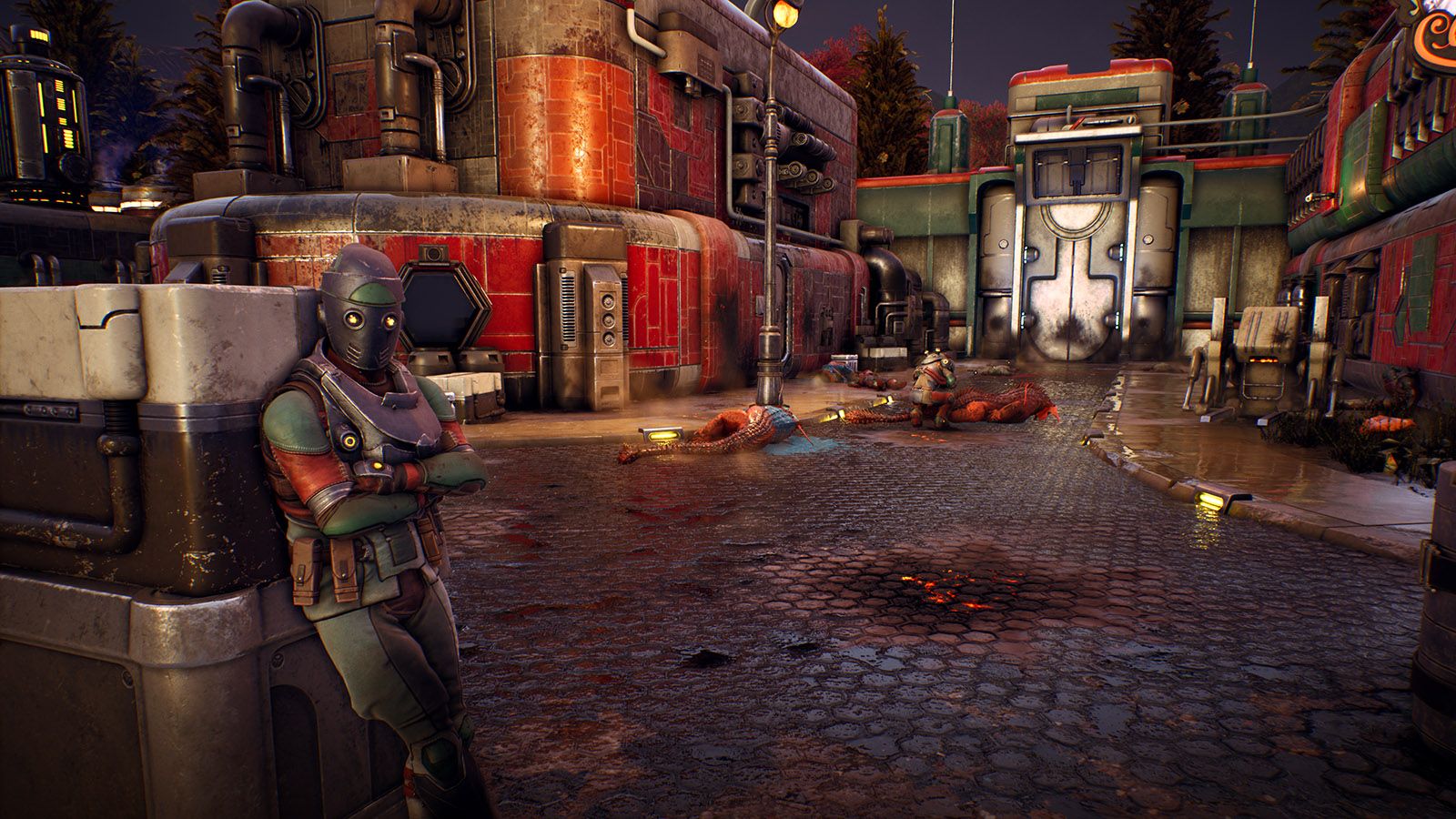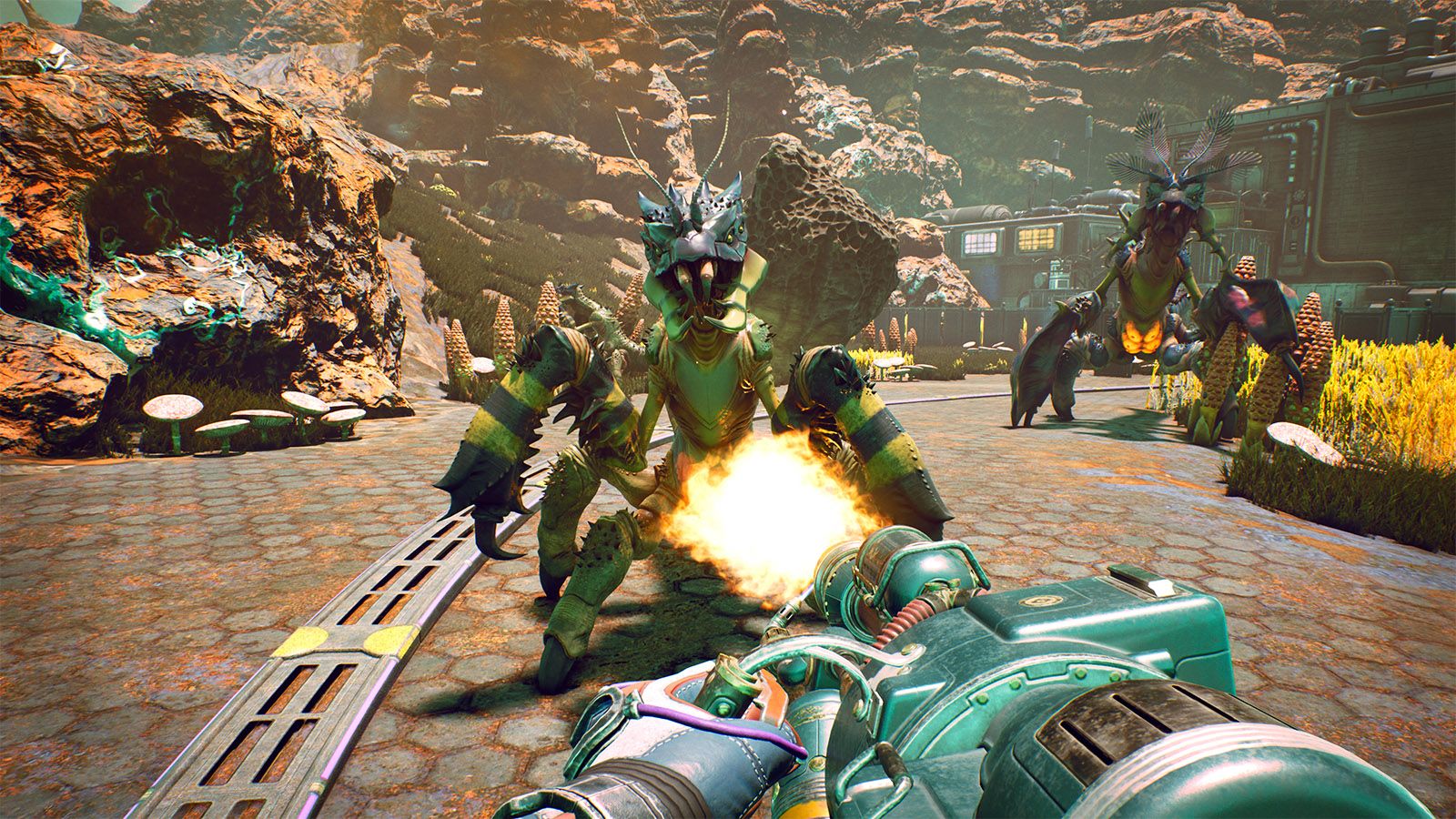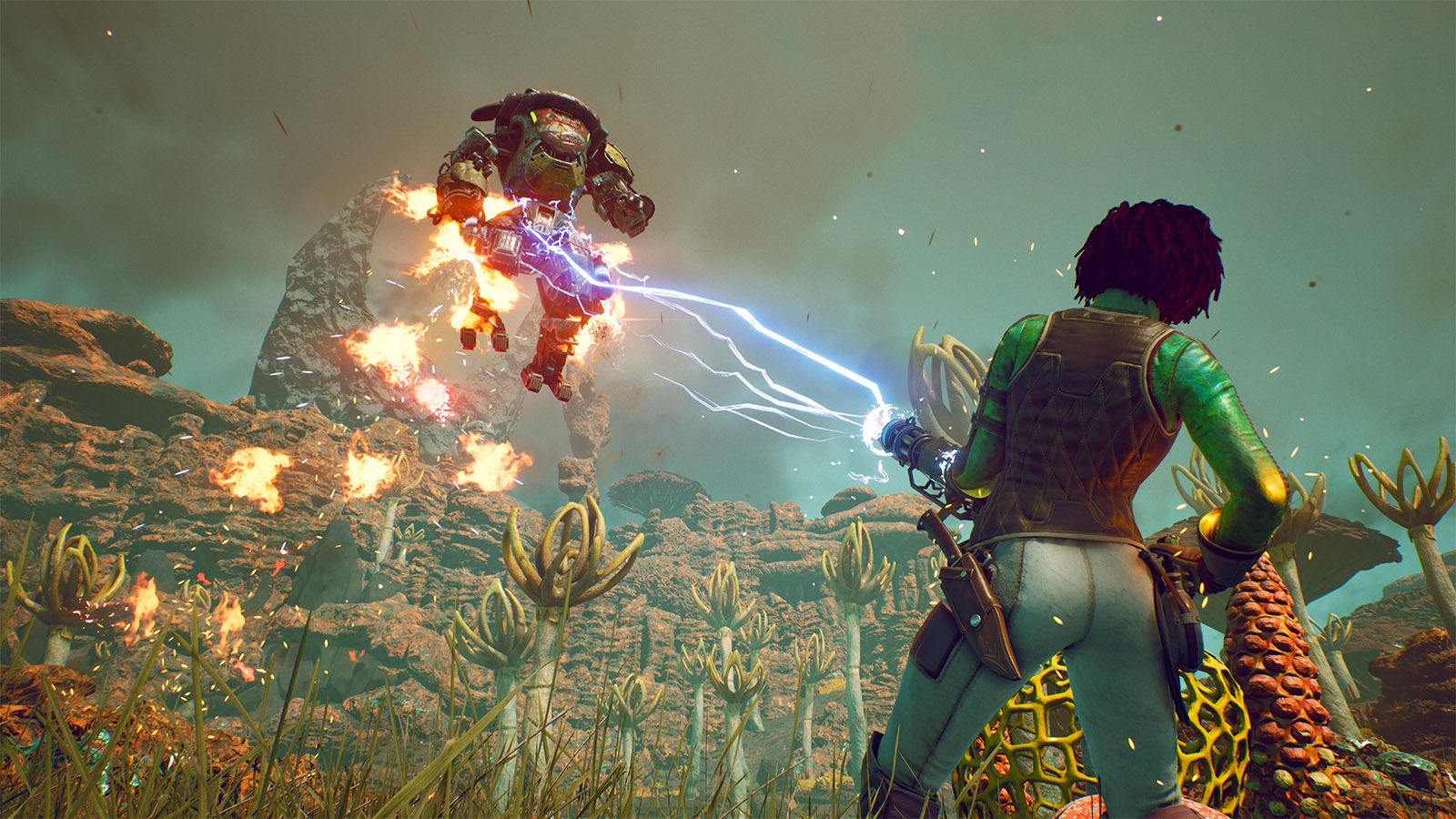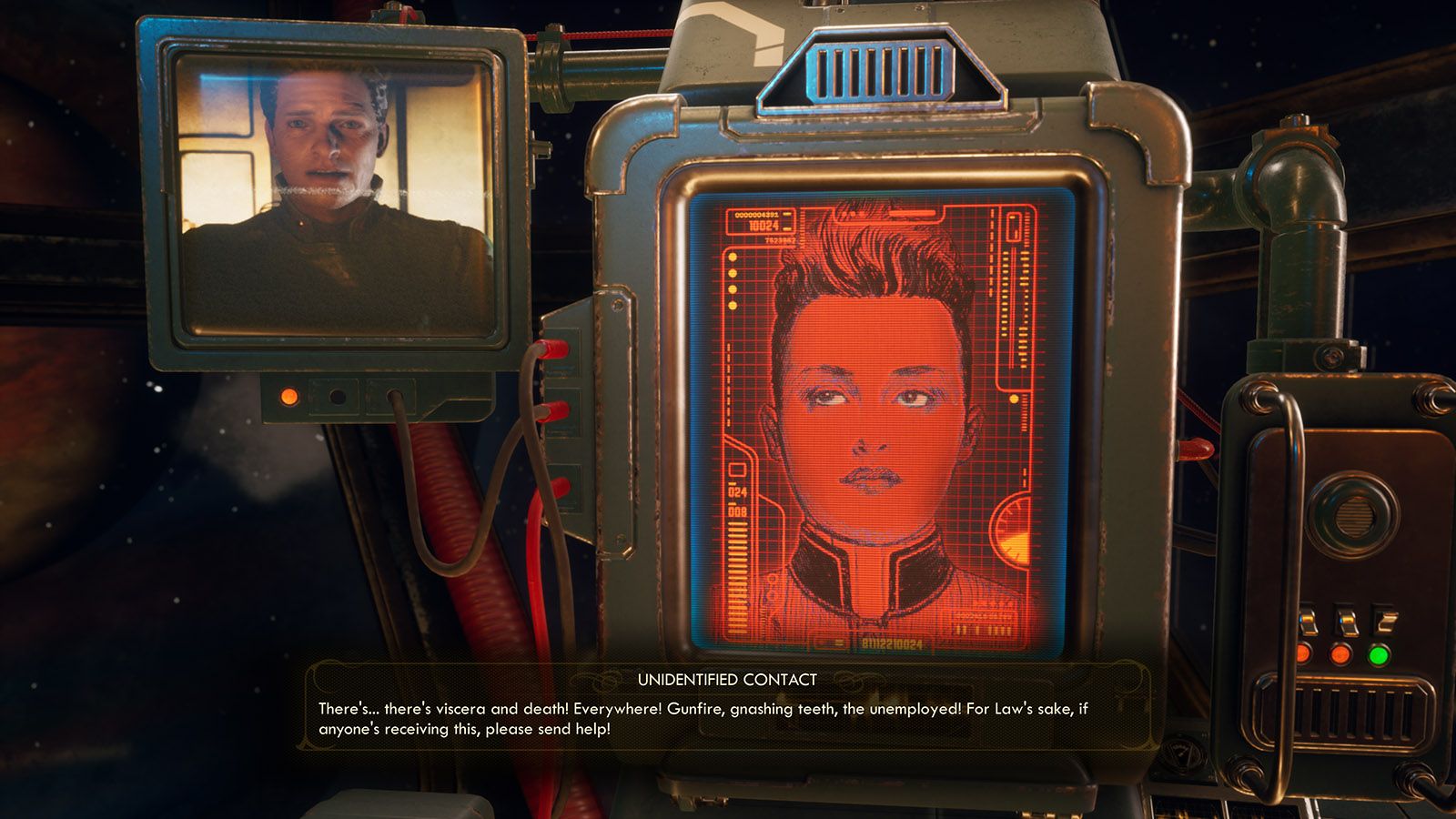Given that it appears to have sprung from more or less nowhere, The Outer Worlds feels miraculously fully formed and deliciously distinctive. While it could be lazily categorised as steampunk, its visuals pay glorious homage to both 1950s sci-fi comics, like Dan Dare, and the sort of graphics that prevailed when HG Wells and Jules Verne were introducing the idea of sci-fi to the world.
On paper, The Outer Worlds might sound derivative: as a single-player, first-person shooter-based role-playing game (RPG), it's undeniably reminiscent of Fallout (with perhaps a dash of Borderlands thanks to some bonkers weaponry). And it pays little heed to modern gaming trends – not only does it eschew any form of multiplayer, but its extensive game-world isn't an open one; instead, it is divided into planets in which most of the inhabitants reside in walled towns and cities.
When you play The Outer Worlds, however, it feels anything but derivative or old-fashioned. Even its loading screens manage to consistently entertain you, and its gameplay is taut and focused – like that of Fallout with the extraneous fat removed. It contains the complex systems you expect to find in an action-RPG – including a skills tree, armour and weaponry modding, a perks system and a sprawling inventory of consumables and loot to scavenge – but, like its gameplay, those systems have been pared to their very essence, so it never feels overly complex.
Our quick take
If you're a fan of action-RPGs and crave some proper Fallout-style action that's distilled to its proper essence – i.e. with none of that building nonsense or other extraneous elements – then you'll love The Outer Worlds.
It offers some of the finest escapism seen in any game this year. For a game emerging from the left-field of the industry it's stunningly classy, well-designed and utterly coherent.
It's also now available on PlayStation 4, Xbox One consoles, in addition to PC. The Nintendo Switch release is coming, but keeps getting delayed (its currently marked for 25 October 2020).
The Outer Worlds is a future cult classic. There's no excuse to not play this truly stellar game.
This review was originally published 3 November 2019 and has been updated to reflect updated availability
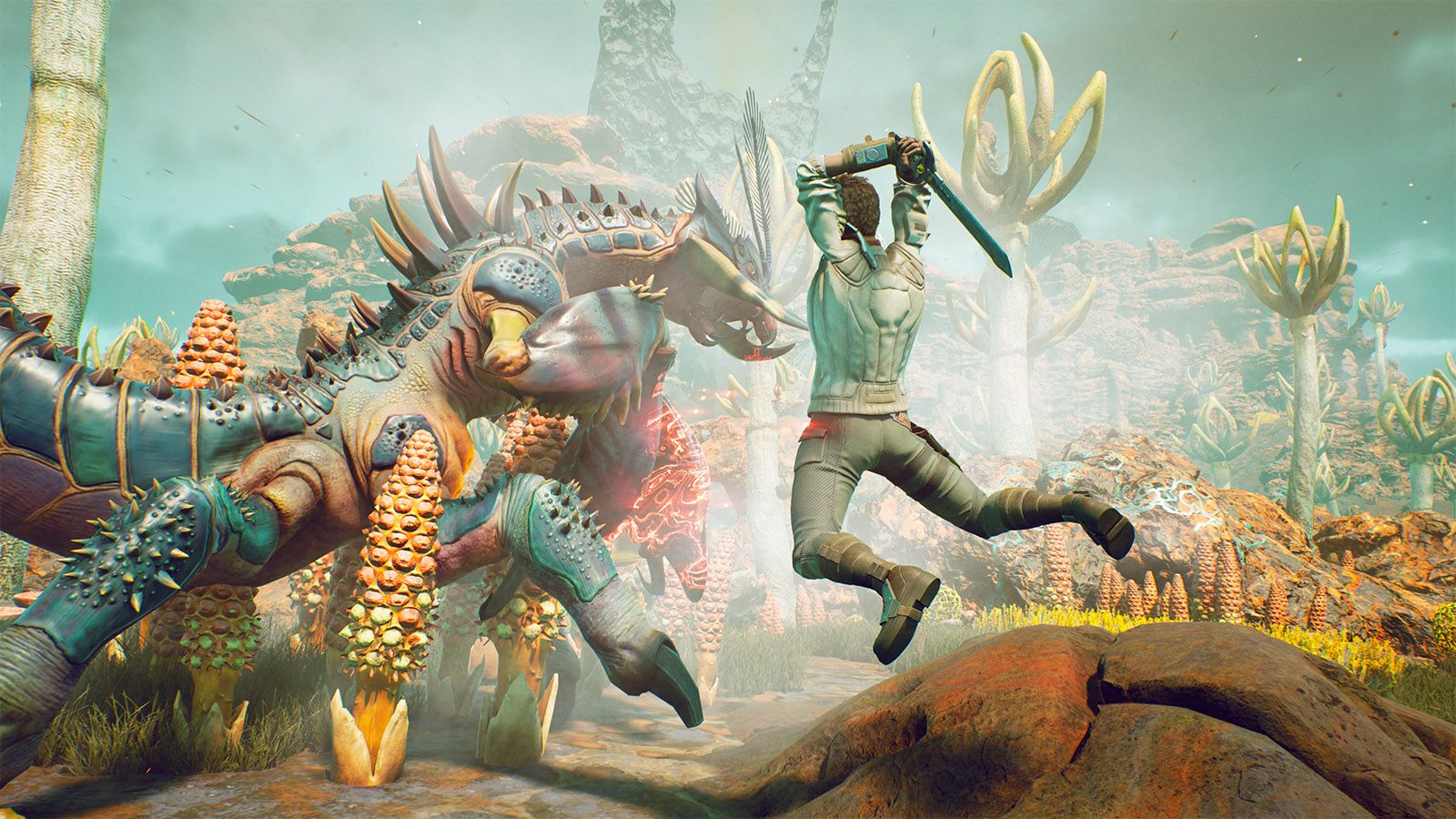
The Outer Worlds - 5.0 / 5
| FOR | AGAINST |
|---|---|
|
|
Outer Worlds
Supremely satirical
Story-wise, The Outer Worlds grips you from the outset and spirals off in some great and frequently hilarious directions. Set in a retro-future in which mankind has started to colonise other solar systems, it takes place on various planets and space-stations within an Earth-colonised solar system, called Halcyon.
It opens with an outlaw mad professor type, Phineas Welles, gaining access to The Hope, a spaceship stranded and abandoned – following a bureaucratic mix-up – in the Halcyon system, containing hundreds of thousands of settlers from Earth who are still in suspended animation.
- Top Nintendo Switch games: Best Switch games every gamer should own
- Top Xbox One games: Best Xbox One S and X games every gamer must own
- Top PS4 games: Best PlayStation 4 and PS4 Pro games every gamer must own
Welles liberates one hibernation cell, containing you (so you can choose your character's sex, appearance and a skill-buffing attribute), rouses you on his secret space-base, then ejects you in a pod to Terra 2, the nearest planet, where an adventurer called Captain Hawthorne awaits to help you out.
Hawthorne is squashed by your pod, though, so your first task is to reach his spaceship and get it going – which kicks off a hilarious narrative romp that, among other aspects, takes the mickey out of corporate excess.
In Halcyon, corporations have effectively replaced any form of government – each town is dominated by a particular one – and it swiftly becomes clear that the shadowy Board, which oversees them all, is doing a bang-up job of running the entire solar system into the ground.
Your overriding mission is to revive as many of The Hope's inhabitants as possible, so that they can take over from The Board and run Halcyon in a less self-serving, money-grabbing and paralytically bureaucratic manner. Even the game's stylised, whimsical visuals fail to hide an undercurrent of biting anti-corporate satire.
Do the right thing, or don't
Not that you necessarily have to do the right thing. At the end of pretty much every mission or side-mission in The Outer Worlds, you can opt to betray those for whom you were performing the mission (it contains many factions, and your status as a friend or enemy of each is meticulously logged) and use the mission object or information for your own ends, reshaping the story in the process. As a result, there's loads of incentive to play through this game a number of times.
Gameplay-wise, The Outer Worlds may use Fallout 3's blueprint as a base – you're regularly beset by groups of enemies, which have weak spots and must be shot or meleed – but it adds plenty of its own elements too.
Those include a time-dilation move which slows down proceedings temporarily, allowing you to get a handle on the enemies you face and get the jump on them. There's a health-restoring inhaler which can also be loaded with meds that give you temporary buffs, such as increased resistance to bullets and status effects.
And, most importantly, you're not just a lone wolf: throughout the course of the game, you accumulate a band of willing, AI-controlled accomplices (up to two at a time, anyway), who fight alongside you and have special moves that can be triggered.
Wicked weaponry
The weaponry on offer is great too. Obsidian clearly took plenty of cues from Borderlands in that respect. You accumulate a vast assortment of guns and melee weapons so you can, for example, kit one companion out with a grenade launcher and another with a plasma rifle or a sniper rifle, according to the enemies you face.
There are two types of ammo: light and heavy. Weapons deteriorate with use, so you must repair them and improve them with mods, and you can carry a generous arsenal of up to four in total.
But the coolest weapons come with their own discovery missions: called science weapons, and utterly in keeping with the Dan Dare vibe, these mess around amusingly with the laws of physics. One example is a shrink ray, which temporarily renders enemies tiny.
The Outer Worlds' shooting engine is immaculate too: precise and with plenty of feel. As you level-up and buff your party members with perks, you develop the satisfying ability to take on large groups of dangerous enemies. Although you always have to take a tactical approach, swapping companions if needs be.
There are some outbreaks of (not overly taxing) puzzling in the game, and you often find in missions that there are ways in which you can stack the odds in your favour, for example by taking out one particular type of enemy, as long as you're prepared to sleuth around a bit.
The missions are pleasantly varied and thoroughly entertaining. All the way through, The Outer Worlds' writing is absolutely superb. Its game-world is utterly inviting and gloriously distinctive. One great showcase for the writing is a set of dialogue-based missions concerning each of your companions, which feel like mini-soap operas. Pumping up your dialogue skill pays dividends: you get plenty of chances to use words, rather than guns, to achieve your mission-goals, thus dialogue is a major part of the game.
Outer Worlds
To recap
Distilled essence of action-RPG in a sublime steampunk setting. It's a cult classic in the making, which will delight fans of Fallout and vintage sci-fi.

